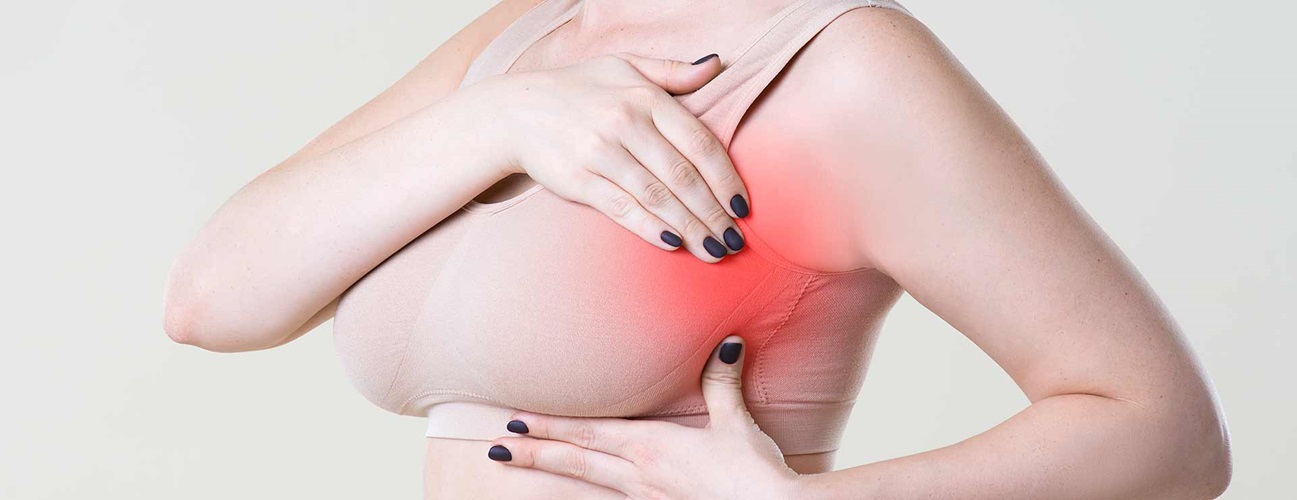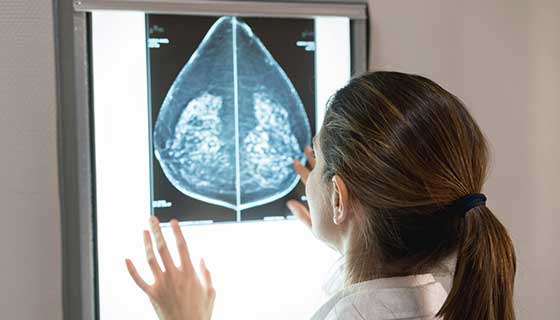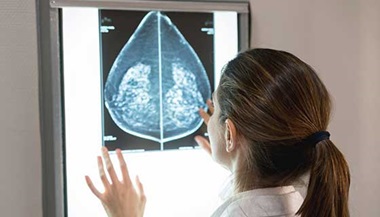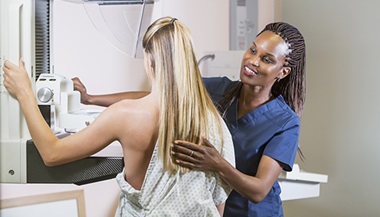Common Benign Lumps
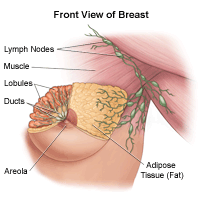
What are some common types of benign breast lumps?
There are many possible causes of non-cancerous (benign) breast lumps. Two of the most common causes of benign single breast lumps are cysts and fibroadenomas. In addition, several other conditions can present themselves as lumps, such as fat necrosis and sclerosing adenosis. Only your healthcare provider can diagnose your breast lump.
What is an abscess?
A breast abscess is a pocket of pus that causes inflammation and a sore lump in the breast. Other symptoms include fever, and tiredness.
What is a cyst?
A cyst is a fluid-filled sac that develops in the breast tissue. They most often happen in women between the ages of 35 and 50 and are common in those nearing menopause. The cysts often enlarge and become sore just before your period. They may seem to appear overnight. Cysts are rarely cancerous (malignant) and may be caused by blocked breast glands.
Cysts can feel either soft or hard. When close to the surface of the breast, cysts can feel like a large blister, smooth on the outside, but fluid-filled on the inside. When they are deep in breast tissue, cysts will feel like hard lumps because they are covered with tissue.
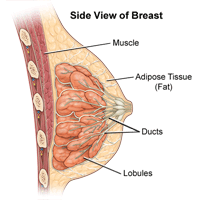
How are cysts diagnosed and treated?
Your healthcare provider may find a cyst during a physical exam. He or she may confirm the diagnosis with a mammogram or ultrasound. You may also have a fine-needle aspiration. This involves guiding a very fine needle into the cyst and drawing fluid from it (aspiration). This also serves as the treatment for this condition. Once the fluid is aspirated, the cyst collapses and disappears. But, cysts can reappear later, in which case they are simply drained again. Cysts are seldom cancerous (malignant).
What is a fibroadenoma?
Fibroadenomas are solid, smooth, firm, noncancerous (benign) lumps that are most commonly found in women in their 20s and 30s. They are the most common benign lumps in women and can occur at any age. They are increasingly being seen in postmenopausal women who are taking hormone therapy.
The painless lump feels rubbery and moves around freely. You may find one yourself. Fibroadenomas vary in size and can grow anywhere in the breast tissue.
How are fibroadenomas diagnosed and treated?
Your healthcare provider may diagnose this type of lump simply by feeling it. But, he or she will want to confirm the diagnosis with a mammogram or ultrasound and fine-needle aspiration. Sometimes, in very young women, the fibroadenoma is not removed. However, since sometimes these tumors enlarge with pregnancy and breastfeeding, your provider may suggest having it surgically removed.
While most fibroadenomas do not lead to cancer, there is a type of fibroadenoma that has been linked to an increased risk of cancer, particularly in women with a family history of the disease.
What is fat necrosis?
Fat necrosis is a condition in which painless, round, firm lumps caused by damaged and disintegrating fatty tissues form in the breast tissue. Fat necrosis often occurs in women with very large breasts or who have had a bruise or blow to the breast. This condition may also be the result of a lumpectomy and radiation from a prior cancerous lump. In some cases, healthcare providers will watch the lump through several menstrual cycles. He or she may want to do a mammogram before deciding whether to remove it. These lumps are not cancerous and they do not increase your risk of cancer.
What is galactocele (milk retention cysts)?
These are fluid-filled masses usually caused by a blocked milk duct.
What is a hematoma?
A hematoma is a blood-filled mass caused by injury or a surgical procedure of the breast.
What is sclerosing adenosis?
Sclerosing adenosis is excess growth of tissues in the breast's lobules. This often causes breast pain. While these changes in the breast tissue are very small, they may show up on mammograms as calcifications and can make lumps. Usually a biopsy is needed to rule out cancer. In addition, because the condition can be mistaken for cancer, the lumps are usually removed through surgical biopsy.

